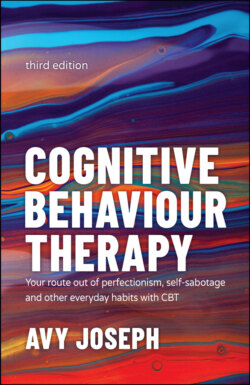Читать книгу Cognitive Behaviour Therapy - Avy Joseph - Страница 8
1 Understanding CBT for Goal Achievement
Оглавление‘People are not disturbed by events but by the view they hold about them.’
Epictetus, Stoic philosopher c. AD 75
This chapter will introduce you to some of the basic ideas and principles of Cognitive Behaviour Therapy (CBT) and how you can use it to help you achieve your goals. First, though, what does Cognitive Behaviour Therapy (CBT) actually mean?
Cognitive simply means our ‘thinking processes’: how we think, how we acquire information and knowledge, how we store it in our head, how we evaluate it and how we base some of our decisions on it.
Behaviour means our action or reaction to something. It's the doing bit. Our behaviour can be conscious or unconscious (out of our conscious awareness). In CBT, the word ‘behaviour’ comes from a branch of psychology called ‘behaviourism’, which is concerned with what can be observed rather than what can be speculated or assumed. It is based on what you have learned and become accustomed to, how this affects your actions and feelings, and how you can unlearn what you have learned in order to change.
Therapy means the treatment for a health problem, after a diagnosis or an assessment has been made.
CBT is one of the counselling therapies that examines how our thinking, attitudes, beliefs, opinions and behaviour are formed, how they affect our success, our lives and feelings, and how changing them impacts on our performance. The ideas stem from both ancient and modern thinking in philosophy, science, psychology, common sense and humanity.
Here are some of basic principles central to CBT. Many may be shared by other therapeutic approaches but the combination of these principles goes some way towards understanding CBT.
